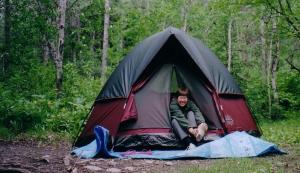
The creation of Saskatchewan's regional parks reflects the co-operative spirit that is a hallmark of the province: a growing economy inspired communities to set aside land for recreation areas that enhanced their quality of life; localities that lacked sufficient money or resources joined together and built campgrounds, golf courses, and swimming pools. Today, regional park authorities operate the province's 101 regional parks. Beginning in the 1960s, local and regional communities partnered with the provincial government to establish a regional park system. The Regional Parks Act of 1960 granted funding to local governments, which established and operated grounds for recreational purposes. The initial Parks Assistance Program provided 60% of the necessary revenue for capital development; by 1965, a park maintenance program had been instituted. Officially organized in 1961, Thomson Lake Regional Park was the first to enter the new system; the most recent addition is Mainprize Regional Park, which joined in 1994.
In February 1962, the Saskatchewan Regional Parks Association (SRPA) was created to act as a uniform voice representing the growing number of regional parks. The Association adopted a constitution, and since then has provided an effective liaison between provincial government, rural municipalities, and member park authorities. The SRPA has campaigned to make regional parks an affordable alternative to provincial and national parks. This determined marketing approach resulted from changes in government funding and cutbacks that threatened the sustainability of the regional parks system throughout the 1990s. Since 1999, the provincial government has provided the SRPA with four consecutive capital grants of $500,000; this funding has helped cover the cost of improving infrastructure throughout the parks system, and renewed the partnership between government and regional parks.
The 101 regional parks are divided into four directional zones and occupy a unique place in Saskatchewan's ecoregion classification system. The abundance of parks means that most are within a short distance of major cities and other notable tourist sites across the province. Destination parks are suitable for long visits because of their numerous campsites, facilities, and activities. Nature and hiking trails are available at most parks while all offer birding. Over half of all regional parks have golf courses ranging from nine sand-green holes to eighteen grass-green holes. Fishing is another popular activity at regional parks, most of which provide a boat launch. Several parks are adjacent to beaches, and over twenty have swimming pools. Three parks in the system operate ski hills.
Holden Stoffel